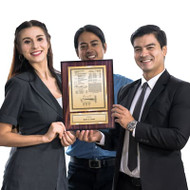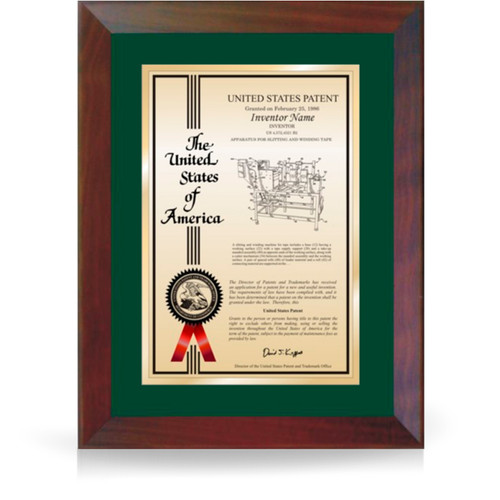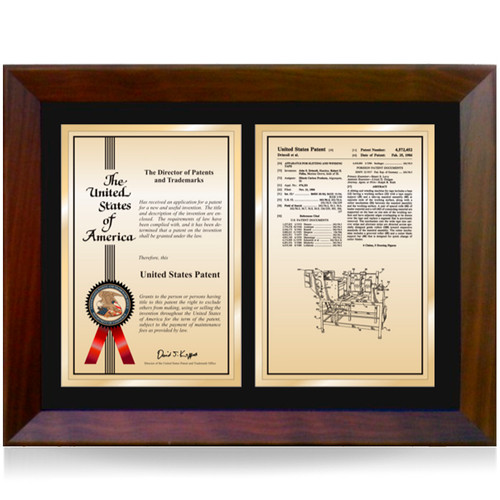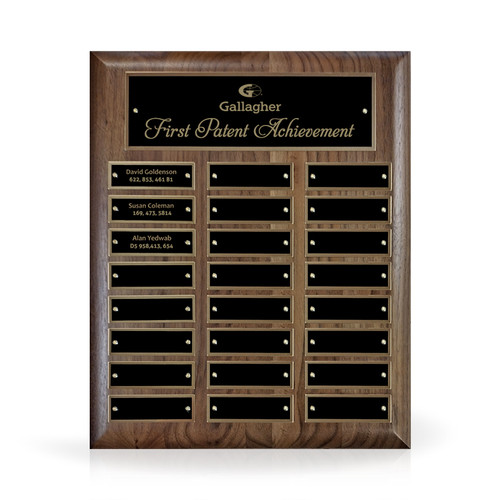From Campus to Commerce: How University Research Drives Patent Awards
Sep 25th 2025
When you hear the words innovator or inventor, you might picture Thomas Edison or Steve Jobs. Your mental image of an invention's birthplace and time might be that of a single figure, working alone in a garage or a basement. While groundbreaking ideas can, and have, blossomed in a garage, many of the world's most significant patents are born in a vastly different setting altogether: inside a university and by a team of people and not at the hands of a lone creative genius.
The modern university is a nexus of research and development, often blending academic curiosity with corporate or government funding. It's a place where intellectual property is not just an abstract concept but a measurable outcome, a key part of an institution's legacy. In fact, in 2024 alone, universities were granted over 9,600 U.S. utility patents.
The Technology Transfer Office: From Idea to Reality
University research is the engine of innovation, but the Technology Transfer Office (TTO) is the vehicle that drives it to the marketplace. The TTO acts as a bridge between the lab and the commercial world.
Its primary functions include:
- Identifying research with commercial potential.
- Managing the patent application process.
- Licensing patented technology to startups and established companies.
This process is a win-win: it provides a path for academic inventions to benefit society and generates revenue that universities can reinvest in more groundbreaking research. For more information on how these offices operate, you can review this research from the World Intellectual Property Organization.
A New Measure of Academic Achievement
In academia, success is often measured by published papers and earned degrees. However, in the modern landscape, securing a patent has become a powerful new measure of achievement. It is a prestigious honor for a professor or a research team.
Over the years, we've worked with dozens of universities to develop commemorative awards for the recognition of their inventors and staff. The hallways of many university departments are covered with plaques and awards, and many professors proudly display them on their desks and in their offices.
Recognition of achievement is a basic human need, and a tangible award serves a vital purpose. Having an environment that encourages creativity by showcasing past achievements not only honors the inventors but also supports future innovation and serves as a powerful recruiting tool for attracting top talent.
For more on the role of universities in innovation, see this article from the National Inventors Hall of Fame®.
Notable Patents from the Academic World
A quick search reveals a fascinating history of university-based patents that have changed the world.
Stanford University
Stanford is renowned for numerous patents across various fields, including computing, biotechnology, and digital technology. The university often licenses this technology for commercial use, a process that has generated billions in revenue and fostered growth in the Silicon Valley.
Key patents in computer science and internet technology at Stanford include:
- Google's PageRank: One of the most famous patents owned by Stanford is the original PageRank algorithm, developed by graduate students Larry Page and Sergey Brin. The deal these students made with Stanford included an exchange of two million shares of their newly formed Google stock for the license to the software patents. The university later sold this exclusive license for a reported $336 million in Google stock. That Patent Number is U.S. Patent 6,285,999.
- Digital Music Synthesis: In the 1970s, Stanford professor John Chowning patented his algorithm for frequency modulation (FM) sound synthesis, a pivotal technology for producing realistic digital sound. The patent was licensed to Yamaha, and the technology generated over $23 million in royalties.
- Recombinant DNA: A fundamental technique in genetic engineering was developed in 1973 by Stanford's Stanley Cohen and Herbert Boyer. This technology allows scientists to combine DNA from different organisms and was a cornerstone of modern molecular biology.
Biotechnology and medicine patents at Stanford include:
- Recombinant DNA: A fundamental technique in genetic engineering was developed in 1973 by Stanford's Stanley Cohen and Herbert Boyer. This technology allows scientists to combine DNA from different organisms and was a cornerstone of modern molecular biology.
- Functional antibodies: A technology developed by Professor Leonard Herzenberg and Dr. Vernon Oi at Stanford, in partnership with Columbia University, was licensed to Johnson & Johnson.
- Cancer diagnostics: The university holds patents for technologies that aid in the diagnosis of certain cancers. A recent settlement from 2025 confirmed Stanford's intellectual property rights to PhasED-Seq technology for detecting cancer.
Massachusetts Institute of Technology (MIT)
MIT's patents have been foundational to modern technology.
- Akamai Technologies: Founded by an MIT alumnus, Akamai's technology to address internet congestion is built on algorithms patented through MIT.
- Electronic Ink (E-Ink): The core technology for the electronic paper displays used in e-readers was invented at the MIT Media Lab.
- The Spreadsheet: Dan Bricklin, an MIT alumnus, is credited with designing the first electronic spreadsheet, VisiCalc, which became a "killer app" for the Apple II computer.
- Microchip: Robert Noyce, an MIT alumnus, co-founded Intel and is credited as a co-inventor of the microchip.
Carnegie Mellon University (CMU)
CMU holds numerous significant patents, including those licensed to Marvell Technology Group that led to a $750 million settlement. Many other CMU patents have been licensed to startups, including the language-learning app Duolingo. For more on CMU's patents, see this analysis of their portfolio, which continues to grow across a wide range of fields.
Recent and diverse patents at CMU include:
- Robotics: A 2021 patent for a "self-guided blossom picking device" was granted.
- Medical Adhesives: A 2022 patent details new therapeutic compounds for enhanced medical adhesives, such as liquid sutures and bone cement.
- Artificial Intelligence (AI): A 2021 patent covers AI methods for estimating the density and flow of objects in a scene, even under challenging conditions.
Purdue University
Purdue consistently ranks among the top universities for patent activity, showcasing its role in generating significant intellectual property across diverse fields, such as agriculture, engineering, and materials science.
- Apple Variety Patents: Purdue currently holds eighteen apple variety patents, including these favorites: CrimsonCrisp, Enterprise, GoldRush, Juliet, and Pixie Crush
- Bio-Based Adhesives: Researchers developed sustainable glues from corn protein that become stronger when wet, with applications in various industries and for coral reef restoration.
- 3D Tissue-Engineered Muscle: Patented work by Sherry Harbin focuses on creating 3D muscle for tissue restoration, a significant advancement in bioengineering.
- Ultrafast Imaging: A patent for a new ultrafast imaging system was granted to Zubin Jacob. For more on the inventions that come out of Purdue, check out their Intellectual Property Portal.
These examples just scratch the surface of the numerous contributions academic institutions make to our shared universe of innovations and ideas. From fundamental technologies to life-saving medical advances, university research is a powerful force driving our world forward.
Celebrate Your University's Legacy of Innovation
Has your institution recently received a patent or trademark? We specialize in creating elegant, personalized commemorative awards that honor these landmark achievements. Our engraved plaques are a testament to the hard work, brilliant minds, and pioneering spirit of your faculty, researchers, and students.
Ready to celebrate your next great invention?




